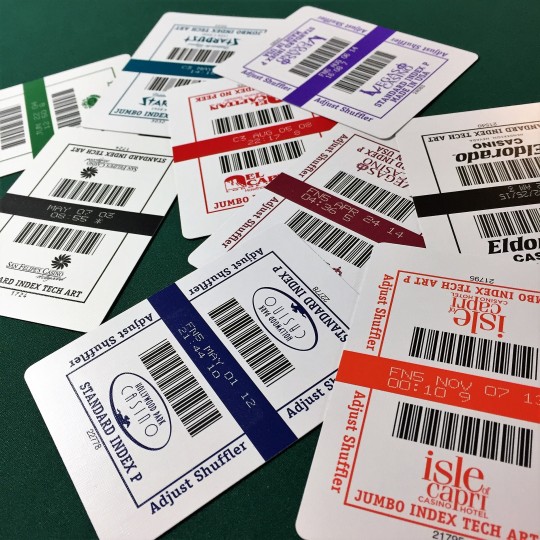#modifications i made to that recipe (like it was basically just a rough guideline at the end) and i am a dumbass and never wrote any of it
Text


29.06.23, thursday
I had a presentation today, and there's nothing (and I mean nothing) I hate more than those, so as a treat I made the rest of the day real cozy. Baked bread & listened to podcast while cleaning my apartment; good chill times
#also no it's not the absolute best bread; i used to be lots better at bread some years ago but i can't for the life of me remember what#modifications i made to that recipe (like it was basically just a rough guideline at the end) and i am a dumbass and never wrote any of it#down so i gotta now do some bread research and start again with tinkering everything#but the problem is that I live alone now and i can't bake like multiple big loafs a week bc it's just me eating#so it'll be lots slower this time#yea i should/could have also just been productive bc the thing i had that presentation on is still not like entirely done#but it's like almost there and I could afford a chill evening#presentations take lots of energy out of me anyways even if it's just a small quick one like today was like I am just done for the day afte#so nothing too great would've come out of it anyways#at least I now have a clean kitchen and no longer and actual mountain of clean unfolded laundry on my couch#studyblr#bookblr#booklr#aesthetic#books#study#reading#read#book#studyspo#dark academia#chaotic academia#june 2023#2023
120 notes
·
View notes
Text
Blue seals, Red seals, black seal, Aristocrat stock, Bees and a lot of playing cards!

There has been a lot of talk about blue seal decks versus black seals deck and it sometimes can be confusing whether you are a collector, a magician, a cardist or a poker player. In this article, I will do my best to answer some of those questions and provide additional facts concerning playing cards from USPCC. I do not have all the answers and some of the things I write are guidelines and not definite truths. I sometimes even wonder if the people that work at the UPSCC plant still know about how they used to make playing cards in the old Ohio factory. It feels like they have lost some of the techniques and knowledge over the years. There is even a rumor that suggests that they can’t even make the Steamboats (and I love those cards!) like they used to because they were considered their cheap stock and they just threw the recipe away. But let’s carry on!
My information comes from various persons but a lot I have heard from Lee Asher, magician and president of the 52 plus Joker club: http://www.leeasher.com/playing_cards/collectors/clubs/52_plus_joker_playing_card_collectors.html
He also shows how to date a deck of cards here: http://www.leeasher.com/playground/articles/how_to_date_a_deck_of_cards.html
He also visited the USPCC plant (old and new). As far as I am concerned, he is one of the most knowledgeable people about playing cards and a hell of a fine magician. He also designed his own playing cards. There is also Chris Severson, another fine magician, who wrote a VERY good article on the subject. Chris does not take anything for granted and always does extensive research on subjects he likes. He even went to measure with a precise caliper the thickness of different stocks of cards by brand, year etc. You can fine is article here:
http://www.whoshuffleslikethat.com/almost-everything-you-need-to-know-about-blue-seals/
So here are couple of random information and answers to your questions.
First, here is the way to know if the playing cards come from Ohio (before 2009) or Kentucky (2009 and after). The USPCC plant was moved in 2009 and the decks from that year are mostly terrible (Especially Bicycle). They have become better after 2012.
Black seal: Kentucky, year 2009 and after
Blue seal: Ohio, before 2009.
There is no way to get around it. A black seal Bicycle deck (regular) comes from Kentucky. Even if the box says Ohio, it’s from Kentucky when wearing a black seal. That is because the leftover boxes were moved to the new factory. There may be some exceptions to this called a transformer deck where the box and cards were made to the old factory but were moved to Kentucky before being sealed and shipped.
Now here is what you can say about casino playing cards:
Black seal: Kentucky, year 2009 and after
Blue seal: Ohio, before 2009.
Red seal: Ohio, before 2009. (Better quality)
The red seal has the same meaning then the blue seal regarding the location of the factory (Ohio) and years. Some people will claim that the red seal are for casino card only. That may be true in most case as I did not find a lot of red seal decks that are not for casinos but I have a lot of casino playing cards with blue seals. My guess is the red seal may, at one point, signify higher quality and were reserved for special customers like casinos. They were offered as an option to use for custom/casino decks instead of the common blue. What is neat about having a sealed and unopened casino deck is that there is always an extra card with a barcode for the casinos (maybe for the automatic shufflers) that writes the exact date (month, day, year) the deck was produced. So you always know at what factory this deck was produced. Any other colors was when they decided to start doing custom seals (white.)

Casino playing cards stock and finish
As for the stock for casino playing cards, USPCC have 2 types of finish: Aristocrat (casino finish) and Bee (cambric finish). First, let’s get a fact straight, the playing cards are printed on the same paper (or stock). Air cushion, cambric, smooth, ivory, casino, magic and all other kind of finish are printed on exactly the same cards (same paper, same thickness). The difference lies in the way they apply the varnish at the end of the process. If they want air cushion finish, they will roll a kind of big press with needles that will create the little dimples that make the finish as we know it on classic Bike decks. It is mostly how you finish the process that determines the feel of playing cards. Bicycles feel thinner because the dimples in the finish are deeper than in the cambric finish for Bee playing cards. Ivory and smooth means there is no dimples applied to the finish. These cards will feel thicker and less flexible. (A great way to make a rough and smooth deck for Blackjack but I digress!)
Having said all of this, let’s compare both stocks of casino playing cards. The Aristocrat cards (casino finish) feel thinner and more flexible than the Bee cards (cambric finish). Bee cards feel thicker and break-in harder. But the Bee playing card will last longer. They are also more expensive to produce as casinos will have to pay more per deck. The aristocrats are the cheaper option for casinos. These observations are true for cards coming from Ohio and Kentucky. But we also see some differences between the factories.
Aristocrat blue seals decks (from Ohio) will Faro very well. They wear out fast and wave but the Faro you can do when they are coming out of a box is awesome! (Try a Stardust casino deck if you can, wow!!!) Bee blue seal decks (from Ohio) are tough and durable like crazy. You have to put the work in at first so they won’t spring on you. They feel good and are perfect for putting trim works in them (belly strippers and N work). The decks will always be good and precise when using them. Put them in a card press to get them feeling like brand new. I really like these old casino decks from Ohio! Although lately, I have some fine casino playing cards that were printed in 2015.
Card face design and index
A lot of casino like Jumbo index. It is a little harder to find regular index in casino playing cards, so if you have a back design you like you might want to stock up on them. There are also different types of index to help the dealers like the no peek index, etc. For example, Blackjack dealers in some casinos will have a mirror built in the table allowing them to see if they have 21 without really peeking at the cards. These casinos will use No peek index cards. The Aces have a big black mark on the top right, while all cards worth ten have a mark on the top left and all the remaining cards have no marks reaching the top of the card. If the dealer spots a mark on the top of each card face in opposite corners, the hand is a blackjack. So basically, all these modifications on the face of the cards are to help the dealers in casinos.
Here is a list of the different index found in casino playing cards:
1. Standard index: This is the standard index you will also find on classic Bicycle playing cards.
2. Jumbo index: This is the standard index you sometime find on Bicycle and Bee playing cards.
3. Standard index P: These are standard index but sometime the casino will ask for values below ten for the index to be slightly lower than a regular index. This will help a Blackjack dealer counting the value and see quickly if he has a Blackjack. Not as efficient as the no peek indication.
4. Standard index tech art: Almost exactly like the one above. The main difference is all the aces always have for pips (index on all 4 corners).
5. Standard index tech art P: As above…
6. Jumbo index P: Almost the same as a classic jumbo index.
7. Jumbo index no peek: The Aces have a big black mark on the top right, while all cards worth ten have a mark on the top left and all the remaining cards have no marks reaching the top of the card.
8. Jumbo index no peek P: Almost the same as above.
9. Jumbo index tech art P: All the aces always have for pips (index on all 4 corners). The value below the 10s have their index a little lower on the playing card.
Here is a little guideline from USPCC for their Bee brand casino cards: http://www.usplayingcard.com/wp-content/uploads/2016/02/14441_USPC_ChooseADesign_SalesSheet_RUN.pdf
Finally, I noticed there is not many factory sealed and uncancelled casino playing cards sold in the USA. Of course, we are talking about cards from casinos that closed or had a big administration change. Casinos still operational will never allow their playing cards to be sold. But why so few of the closed casinos sold in the States? My guess would be that USPCC have a deal that they don’t sell them in the USA but they can sell them to other countries. I know I used to be able to find them easily. Maybe I am sitting on a gold mine that will soon be depleted. Who know?
Cheers,
Slim
p.s. I also added another post below in the blog with a list of all the blue seal and red seal decks from Ohio along with a list of the regular index decks if you want to know what we sell on our website.
2 notes
·
View notes